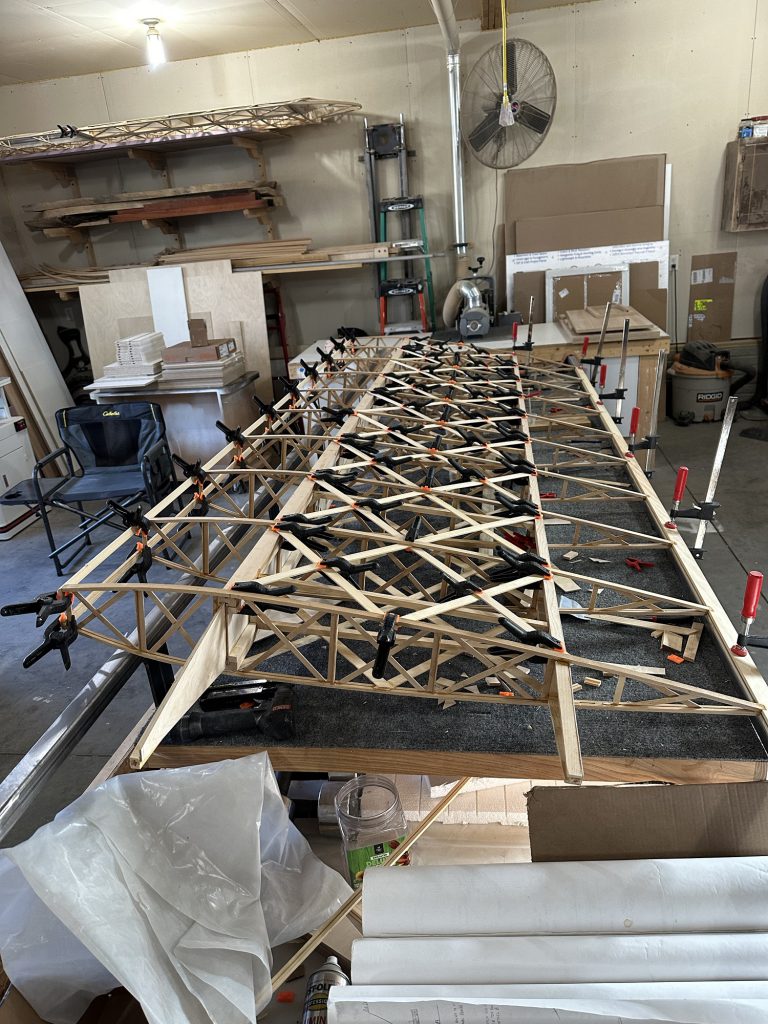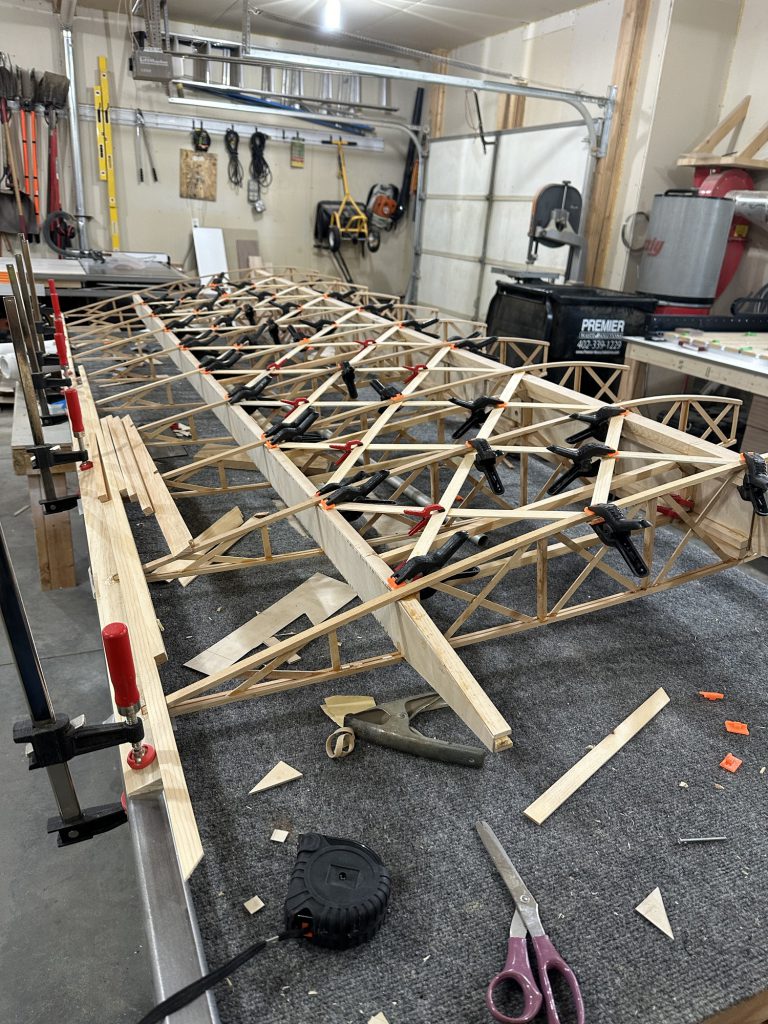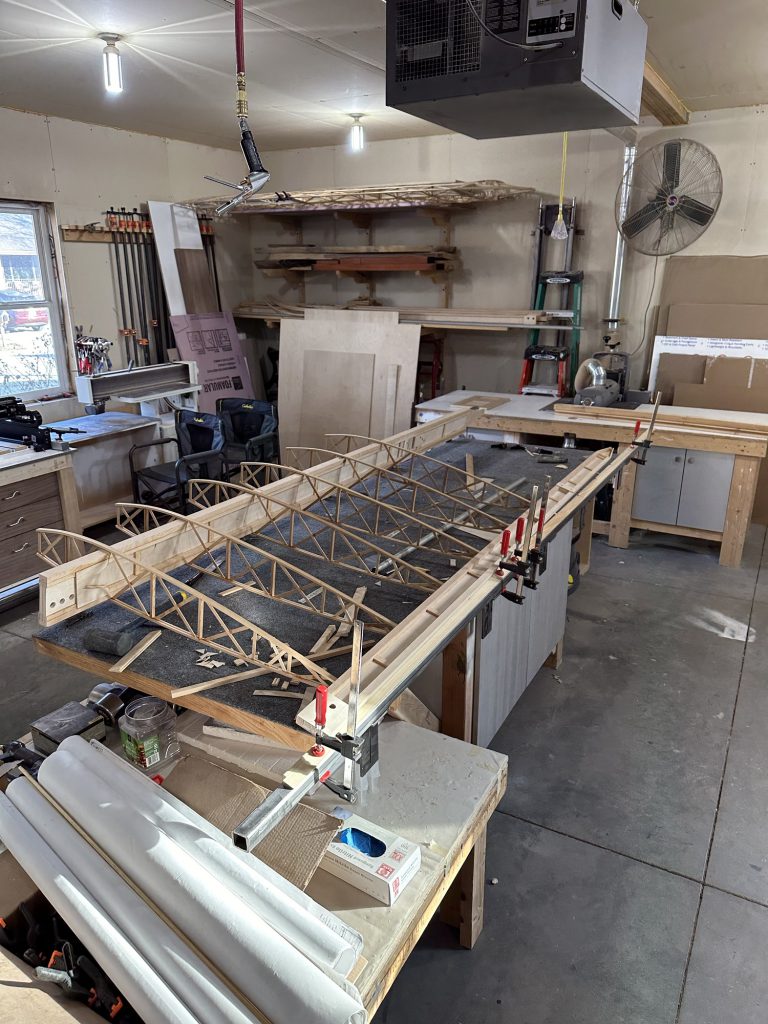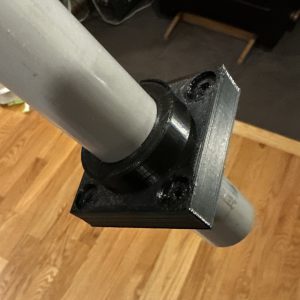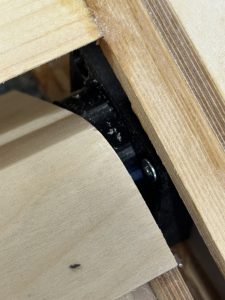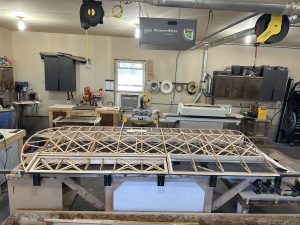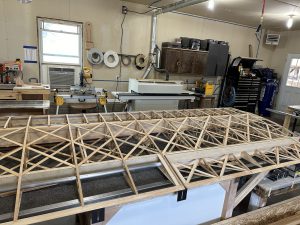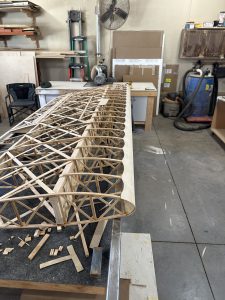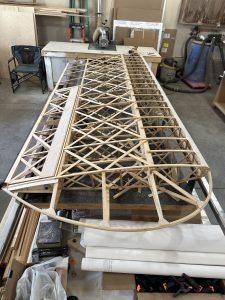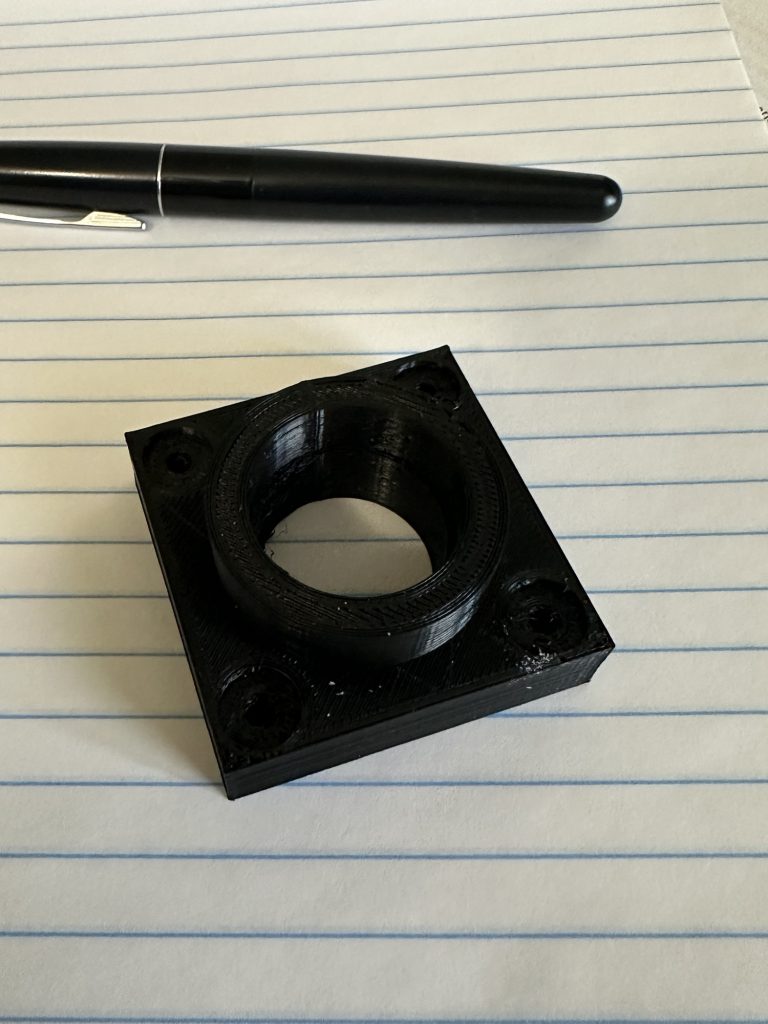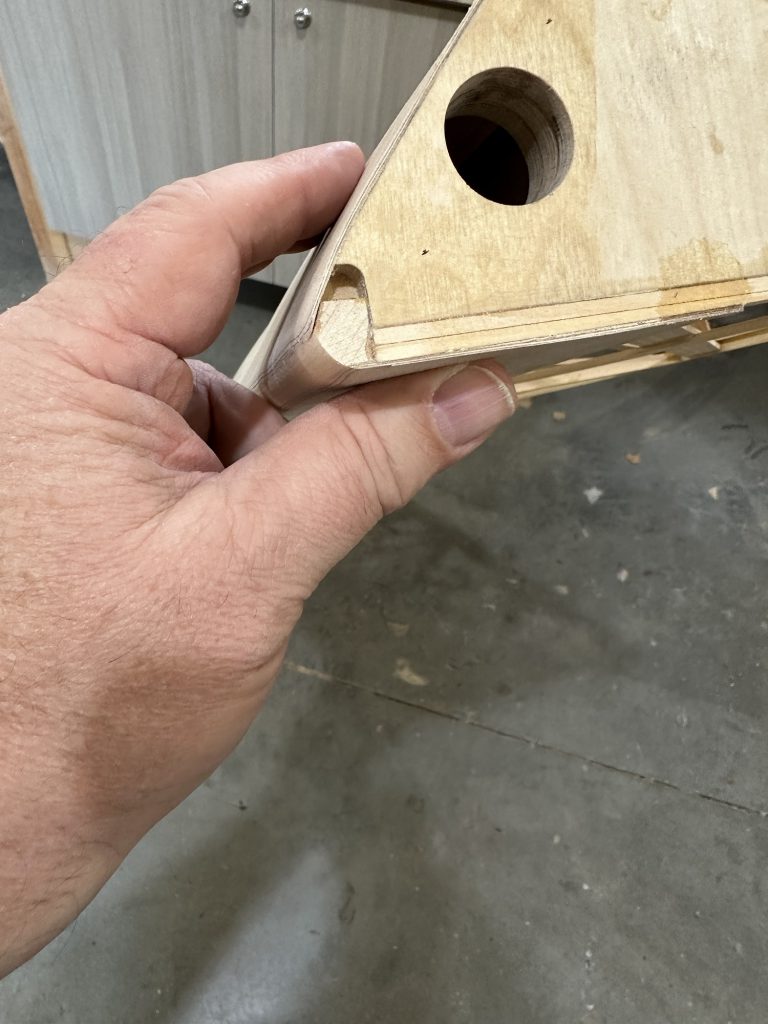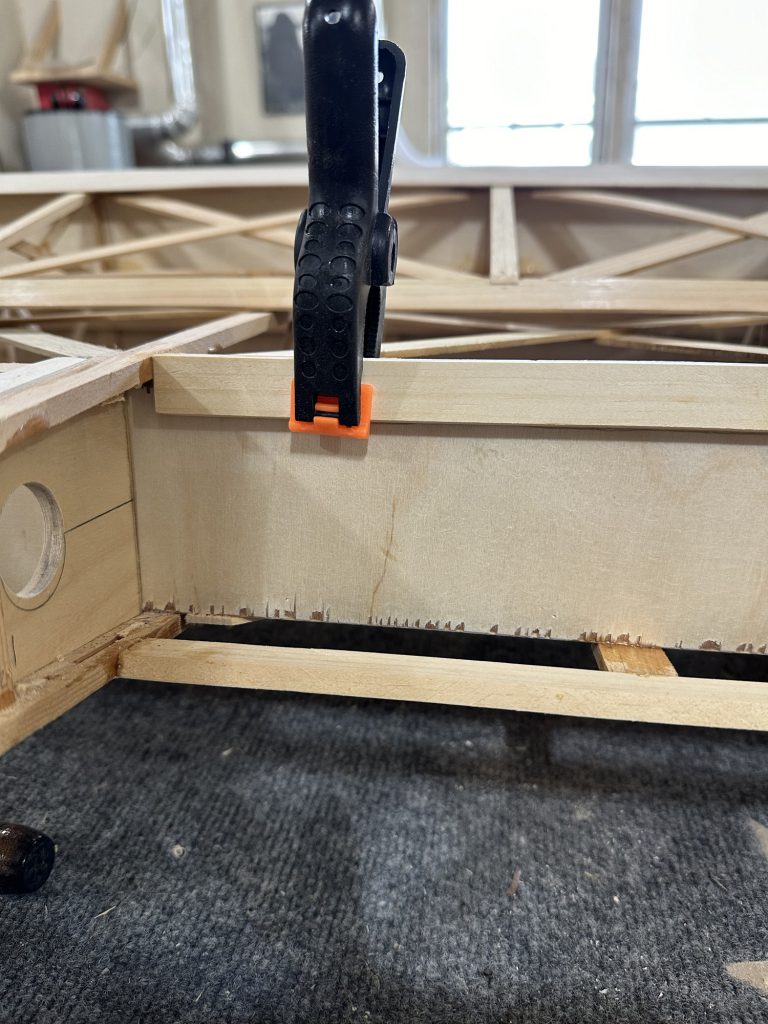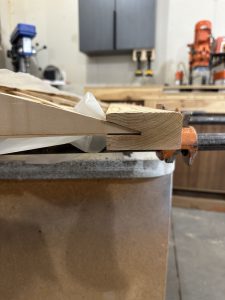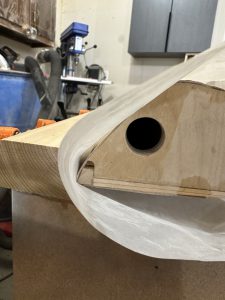Yesterday I got the rest of the compression member gussets glued in, then cut and glued in all but two of the bottom geodetic braces. Those two I couldn’t get in because of a clamp holding a gusset in place. I also got about a quarter or so of the geodetic intersections glued and clamped before running out of epoxy.
Today I finished up the geodetic members, and had enough glue left to install the false spars on the front of the ribs. I think I may have actually used all of the spring clamps I had over there… in fact I know I did, because today I took over another dozen I’d gotten for Christmas a couple years back, that had been sitting in a gift bag in the basement. I think there were a couple left today, but certainly less than a dozen.
